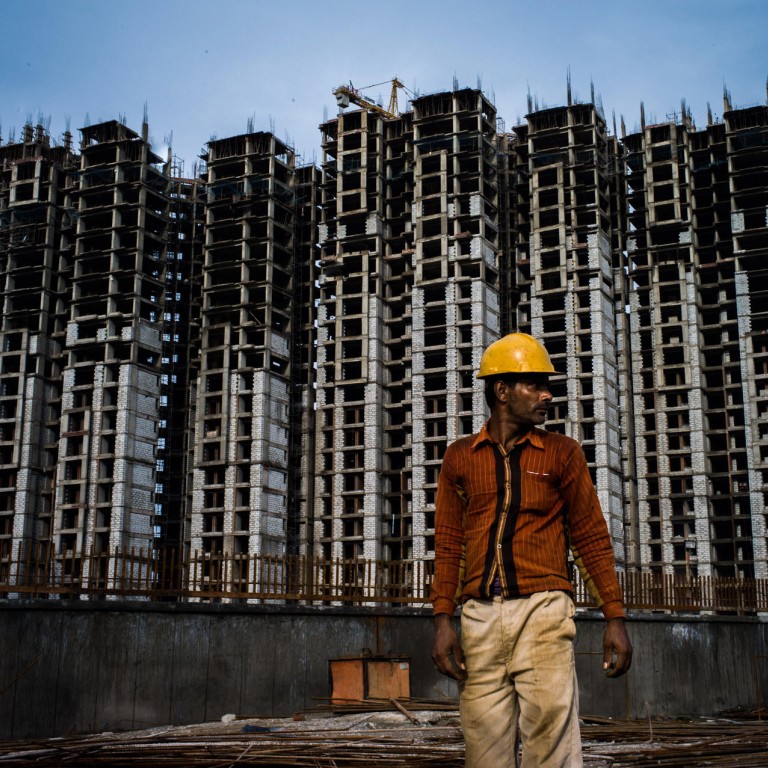
Maximising return on built assets raises living standards
Asia's GDP growth from built assets is set to continue over the next decade, with continuing investment in real estate and infrastructure
The "built" environment, including residential property, office and retail developments, manufacturing plants, transport infrastructure and more, is incredibly important to the health and wealth of a nation.
Vibrant cities with good transport networks allow freedom of mobility; water networks provide clean water and take away waste and storm water; first-class housing enables active communities to flourish; schools and hospitals improve skills and health; and high-quality office space attracts business and efficient workers.
For the first time, the global natural and built-asset design and consultancy firm Arcadis has developed a report on the economic value created by all the buildings and infrastructure assets within a country.
The report looks at how 30 different countries across the globe can improve the return they get from their built assets to raise the standard of living.
The study, developed in conjunction with the Centre for Economics and Business Research (CEBR), a London-based consultancy, shows that China, India and Japan are three of the world's top five markets in terms of the level of return they generate from their built assets, with the United States and Germany rounding out the top five.
But it is by looking at how markets fare on a per capita basis that we can better understand an economy's success in turning built assets into value for society.
On this basis, Hong Kong does well, ranking in the world's top five markets. However, it lags behind Singapore, which has high levels of built-asset wealth and a high proportion of GDP attributable to its built assets.
The difference between the two economies' return on built assets can be explained by contrasting their economies. A high proportion of Singapore's economic output continues to be derived from industry, including high-end manufacturing and pharmaceutical research and development, whereas Hong Kong today is overwhelmingly a service-based economy.
Looking at the dependence of various economies on income generated by built assets compared with the income from wages, salaries and intangible capital and natural resource rents, we find that advanced economies tend to have a generally higher proportion of GDP linked to wages and salaries.
Investors in built assets and other forms of capital still secure a return, but it represents a smaller share of overall income.
As economies develop and diversify, investment in intangible capital like software and computing becomes relatively more important to driving growth - which reduces the relative contribution of tangible investment, including built assets, to overall GDP.
This is one reason why markets like Hong Kong, South Korea, Canada, France and Germany rank lower in terms of GDP generated from built assets relative to developing countries.
The good news is that Asia's GDP growth from built assets is poised to continue over the next decade. With continued investment in real estate and infrastructure from now until 2022, we can expect built assets to generate enormous contributions in many markets across the region.
In fact, eight of the top 11 markets from the study are in Asia. This demonstrates the enormous potential growth for the region as more infrastructure, machinery, plants and other tangible investments are built over the coming decade. The report clearly demonstrates the strong relationship between built assets and GDP. While some countries are proactively managing their built-asset wealth to put them in pole position to reap the economic returns over the coming decade, others are in danger of their ageing built-asset base leading to a slow decline in their economic power.
Investors, owners and occupiers in both the public and private sectors all have a role to play in boosting their built-asset performance to the benefit of themselves and their wider economy.
To improve built-asset performance and enable countries to move up future rankings, countries need to consider their approach in four important areas: how they plan, create, operate and redefine their assets.
This includes planning for the long term by forecasting capacity and demand to help establish required performance targets from assets and to base decisions on an economic business case; creating a managed programme of works, rather than "silo" projects, aligned to clear delivery priorities; operating to maximise performance by identifying cost and revenue drivers; and building assets with the end of the asset's life in mind to allow for easier redefinition when the time comes.
With this approach, Hong Kong and other markets in Asia can aim to rise further in the rankings of contributions from built assets to GDP and increase the prosperity and economic benefits they bring to residents.

